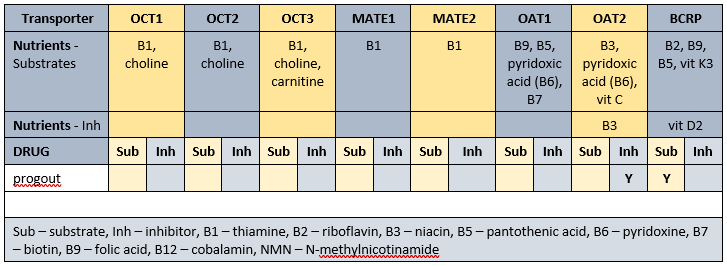Levodopa + carbidopa and zinc interactions are a surprisingly relatively recent finding. Levodopa is both a pharmaceutical and an amino acid that is naturally present in the body. Further, levodopa is a dopamine precursor that can cross the blood-brain-barrier (BBB), and is the brain’s primary source of dopamine.
Carbidopa confers the dual benefits of –
- increasing levodopa availability for brain function,
- decreasing the levodopa dose required to be effective.
Further, carbidopa does not cross the BBB and consequently inhibits the conversion of levodopa to dopamine outside the brain.
Adequate intake of essential trace elements such as zinc is necessary for most metabolic functions. Inadequate and excessive intakes of trace elements alter neurotransmission as a consequence of dysfunctional mitochondria, autophagy dysregulation (cellular recycling and upcycling), endoplasmic reticulum stress, oxidative stress, activation of apoptosis (programmed cell death).
Levodopa can chelate (bind) with metal ions to form very stable ring compounds. The chelated compound is ultimately excreted in the urine. Increasingly the evidence(https://doi.org/10.3390/nu13114114) indicates levodopa negatively impacts zinc status with the proposed mechanism of action being chelation. Evidence also indicates serum zinc levels are negatively associated with levodopa dose, frequency and duration.
Recent evidence (https://doi.org/10.3389/fnagi.2023.1282367) found decreasing serum zinc status correlates with increasing risk of levodopa-induced dyskinesia (LID).
Zinc deficiency can be triggered by a number of factors including inadequate intake, insufficient absorption, increased need, and increased excretion. That levodopa chelates zinc means there is increased zinc excretion and consequent deficiency.
Parkinsons Disease (PD) is primarily a dopamine deficiency that causes loss of the substantia nigra component in the striatum part of the brain.
Zinc deficiency in PD is associated with –
– accelerated degeneration of presynaptic nigrostriatal;
– influencing glutaminergic neurons within the striatum as zinc ions can inhibit and/or disinhibit their modulatory actions;
– epigenetic processes modification as zinc is essential for the activity of various epigenetic enzymes;
– ongoing degeneration through oxidative stress and increased free radical production as they ultimately result in damage to proteins and DNA;
– higher dose of L-DOPA.
Clinical Considerations
If a zinc intervention is being considered when levodopa + carbidopa is prescribed then when is the best administration time? Timing of zinc administration is tricky as food decreases levodopa absorption and therefore drug administration is mostly before meals. If zinc is administered during or immediately after food then there is competition for absorption with zinc from other sources which diminishes the effectiveness of the intervention. Ultimately, the zinc intervention should be administered when absorption is maximised and the risk of chelation is minimized.
Curiously, there is no comment as to whether the levodopa + carbidopa plus zinc chelated compound retains its effectiveness.
Clinical Questions
What actions will you initiate as you a review a person whose prescribed medications include levodopa + carbidopa, will you –
- recommend regular monitoring of zinc status?
- consider recommending a zinc intervention, and at what time?
- recommend the Medications Advisory Committee develop guidelines for zinc administration when levodopa + carbidopa is prescribed?
Conclusions
The levodopa + carbidopa and zinc interaction is a relatively recent finding. A key issue with this interaction is determining an appropriate time for administration of a zinc intervention. The development of appropriate management strategies is required to minimise the drug’s negative impact on zinc status.

Medical History with Nutritional Aspect

Biochemistry with Nutritional Aspect
No recent relevant results available.
Medications That May Adversely Affect Nutritional Status

Transporter-mediated interactions and nutrients

Comments – medication and nutrition impacts only
Data summary
Biochemistry
No recent relevant biochemistry available.
Pharmaconutrition
Currently prescribed 3 medications that include diarrhoea as a side effect.
Currently prescribed vitamin D 50,000 IU/month which provides about 42 mcg vitamin D/day. Advisable to check vitamin D levels and if still low then review current vitamin D management strategy.
Chronic use of coloxyl + senna may promote excessive loss of water and electrolytes, especially potassium, and their regular monitoring recommended.
Progout is a CYP1A2 inhibitor (blocks transporter function). CYP1A2 substrates include caffeine, retinol, melatonin, phosphatidylcholine, inhibitors include grapefruit juice and inducers include coffee; drug’s metabolism inhibited therefore drug will remain active in the body for longer.
Several of the identified membrane transporters inhibit the absorption and/or organ and cellular uptake of thiamine, choline, carnitine, pyridoxine, pantothenate, biotin, folate, niacin, vitamin C and vitamin D. Consequently, blood test results may be unreliable due to their entry into or exit from relevant organs and cells being inhibited. Advisable for blood tests to be conducted several hours after administration of relevant prescribed medicines.
Bowel management
Regular aperients prescribed.
Oral + anal PRN interventions prescribed.
No Nurse Initiated interventions administered.
Staff comments
Staff advise Mrs ACU eats very well and that she lost weight because of the short-term frusemide intervention.
Observations
Mrs ACU is a small, pale, frail charming lady who was sitting in the Dining Room waiting for her midday meal when I went to speak to her – she told me she learned Italian at school and so we were able to chat simply. Mrs ACU told me she eats well and enjoys the food here.
Mrs ACU has suddenly lost weight – staff advise a short-term frusemide intervention.
Pharmaconutrition comments
It is likely Mrs ACU has chronic anaemia as a consequence of her thalassemia minor diagnosis. Early evidence indicates vitamin D is very important in iron and haem metabolism, including intestinal absorption of iron therefore advisable to ensure current vitamin D intervention is effective.
Mrs ACU’s diagnoses include deafness, falls, chronic pain and wound healing – all of which require adequate vitamin D status. Mr ACU’s is currently prescribed a vitamin D intervention therefore advisable to clarify status.
What else would you include?

Yvonne Coleman is an accomplished dietitian with 30+ years of experience in aged care. Her mission is to make information concerning the interactions between medication and nutrition public and easy to access, having created the most comprehensive resource on the matter.
Her areas of competency include food science & nutrition, dietetics and health education. You can find out more about her work on LinkedIn, AusMed, the Enlightened Pharmacist podcast, and The FX Medicine Podcast.


